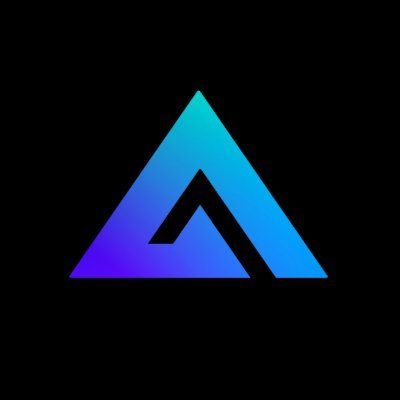Arbitrum is one of the most popular rollups in the Ethereum ecosystem. This is evidenced by the widespread adoption of its tech stack and the many developers that choose to build decentralized applications (DApps) on it. This guide looks at the top Arbitrum DApps in 2025.
KEY TAKEAWAYS
➤ The Arbitrum ecosystem hosts leading DeFi and RWA platforms, especially in the derivatives space, making it a hub for next-generation DApps.
➤ Arbitrum is one of the most widely adopted rollups in the Ethereum ecosystem, with a strong developer base and high TVL across its chains.
➤ Arbitrum One and Nova serve distinct purposes, with One optimized for general-purpose DeFi and Nova tailored for cheap and fast applications.
➤ Nitro and AnyTrust are modular tech stacks that power Arbitrum’s rollups and can be reused by developers to build their own L2 or L3 chains.
Top Dapps on Arbitrum in 2025
1. Premia
Premia “coins” itself as the premier DeFi options token exchange. It is a peer-to-peer DEX that was launched in 2021 and built for the Ethereum Virtual Machine. While the options exchange is the base of the DApp, Premia also includes the Premia Blue app (frontend interface), vaults, governance, and a token.
• Options (European-style) trading and swaps
• Just-in-time (JIT) liquidity
• Over-the-counter (OTC) trading
• Margin system
• Range orders
Ostium is an open-sourced DEX on Arbitrum. It differs from most exchanges in that it allows you to trade perpetuals on Forex, commodities, indices, and blue-chip crypto assets. In other words, Ostium enables on-chain exposure to off-chain real-world assets (RWA) via synthetic perps.
• Telegram bot
• Exposure to RWAs
• Special order types
• Up to 200x leverage
GMX is a DEX that specializes in both spot and perpetual futures trading for cryptocurrencies. It was created in 2021 under the name Gambit Exchange before rebranding to GMX. The DEX was built on the Arbitrum and Avalanche blockchains and differs from many derivatives exchanges in that it uses an automated market maker (AMM) model, rather than an order book.
• Up to 100x leverage
• Spot and perpetual trading
• Multi-asset liquidity pool (GLP pool)
• Cross-chain compatibility
4. Gains Network
Gains Network is a decentralized finance (DeFi) ecosystem focused on leveraged trading through its flagship platform, gTrade. It specializes in crypto, Forex, stocks, and commodities trading. It allows you to trade with high leverage without registering or handing over the custody of your assets to a centralized counterparty.
• Over 290 assets
• Between 35x and 1,000x on select assets
• Multi-chain support
• DAO governance
Fluid is a DeFi superapp ecosystem developed by Instadapp. It features a DEX, money market (lending and borrowing), and vault applications — all built with a unified, pooled liquidity layer. Fluid aims to maximize capital efficiency, scalability, and composability by allowing liquidity to flow seamlessly across its various protocols.
• Unified liquidity layer
• DEX (swap, borrow, lend)
• Governance features and FLUID utility token
• Smart Debt and Smart Collateral
Top Arbitrum DApps compared
| DApps | Category | Type | Token |
|---|---|---|---|
| Premia | DeFi | DEX | PREMIA |
| Ostium | RWA | DEX | N/A |
| GMX | DeFi | DEX | GMX |
| Gains Network | RWA | DEX | GNS |
| Fluid | DeFi | DEX | FLUID |
The top DApps on Arbitrum chosen in this guide were selected based on a multitude of factors. This included 24-hour volume, unique active wallets (UAW), and total value locked (TVL).
What is Arbitrum?
Arbitrum is a general-purpose, EVM-compatible Ethereum layer-2 blockchain that debuted in 2021. It is one of the first blockchains to implement the optimistic rollup design and is one of the most popular rollups on Ethereum by TVL, trading volume, and stablecoin market cap, according to DeFiLlama.
Optimistic rollups like Arbitrum offload some of the tasks inherent to blockchains (off-chain) and inherit security from the layer-1 (Ethereum). This design allows it to scale its transaction throughput and reduce its operational expenses, thereby leading to cheaper fees and faster block times.
Arbitrum utilizes the Ethereum Virtual Machine’s design. This means that you can build the same decentralized applications (DApps) and smart contracts from Ethereum on Arbitrum with ease.
History
Offchain Labs is the brains behind Arbitrum. It is a venture-backed research and development company. Ed Felten, Steven Goldfeder, and Harry Kalodner met at Princeton University and eventually founded Offchain Labs in 2018.
SponsoredSince its inception, Offchain Labs has pioneered many advancements in the layer-2 sector and improved upon what it initially started with its first optimistic rollup, Arbitrum.
Arbitrum ecosystem
Arbitrum has become a magnet for builders. Just as Base positions itself as an accessible on-ramp for the next wave of crypto users, Arbitrum serves as a launchpad for the next generation of decentralized apps and has, as a result, amassed a total value locked (TVL) exceeding $3 billion.
With Arbitrum One and Nova, Arbitrum Nitro, and AnyTrust, developers gain access to an optimized, high-throughput rollup environment that maintains full EVM compatibility.
This enables faster execution, lower transaction costs, and tooling integration. This performance edge has made Arbitrum One a go-to for DeFi protocols, such as decentralized exchanges (DEXs), especially derivatives markets.
Arbitrum’s architecture consists of several core components and networks, each designed to address different needs and application types:
- Arbitrum One: The primary rollup chain built on Nitro. It is optimized for general-purpose, high-performance decentralized applications.
- Arbitrum Nitro: The underlying tech stack that powers Arbitrum One. It offers improved throughput, lower fees, and full EVM compatibility.
- Arbitrum Nova: A separate chain leveraging the AnyTrust protocol, tailored for low-cost, high-volume use cases like gaming and social apps.
- AnyTrust: A data availability model used by Nova that reduces costs by relying on a trusted committee. It is ideal for applications with relaxed security requirements.
Arbitrum One and Arbitrum Nova are both live blockchain networks, or more specifically, L2 rollups. On the other hand, Nitro and AnyTrust are the systems under the hood that define how these chains operate (Arbitrum One to Nitro, and Arbitrum Nova to AnyTrust). They are modular, general-purpose, reusable technologies that other developers and projects can use to launch their own layer-2 or layer-3 chains.
The next generation of DApps
Arbitrum is a high-throughput, low-cost blockchain. This makes it advantageous for applications that depend on fast and cheap execution. As a result, the top DApps on Arbitrum tend to be DeFi applications, particularly those that support derivatives markets. Whether you want to interact with or build DApps, the number of users and sheer on-chain activity shows that Arbitrum is one of the top options to go to in 2025.
Disclaimer: This article is for informational purposes only and should not be considered investment advice. Always do your own research (DYOR).
Frequently asked questions
The top DApps on Arbitrum tend to be DeFi protocols. These particularly include derivatives markets and decentralized exchanges. For example, Premia, Ostium, GMX, Gains Network, and Fluid are top DApps on Arbitrum.
Arbitrum is an optimistic rollup layer-2 solution on Ethereum. It was created by Offchain Labs and launched in 2021. It operates multiple rollups, including Arbitrum One and Arbitrum Nova.
Arbitrum is a general purpose rollup. This means that you can build virtually any type of application on it. It is also EVM-compatible. So, you can build applications similar to the kind on Ethereum.






